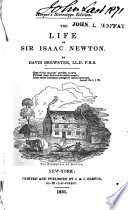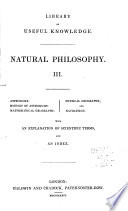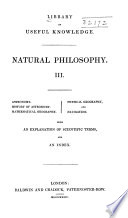 It has been found that, with respect to any two planets, the squares of the times of revolutions are to each other in the same proportion as the cubes of their mean distances,— a most surprising result, for the discovery of which the world was indebted... It has been found that, with respect to any two planets, the squares of the times of revolutions are to each other in the same proportion as the cubes of their mean distances,— a most surprising result, for the discovery of which the world was indebted...  Student's Class Book of Astronomy - Page 166by Francis Bullock - 1873 - 224 pagesFull view Student's Class Book of Astronomy - Page 166by Francis Bullock - 1873 - 224 pagesFull view - About this book
 | Essays - 1828 - 368 pages
...more bodies move round another as their center of motion, the squares of their periodic times will be to each other in the same proportion, as the cubes of their distances from the central body. This holds precisely, with regard to the planets round the Sun, and... | |
 | David Brewster - 1831 - 328 pages
...notion, and upon making the calculations anew, and free from error, he discovered the great law, that the squares of the periodic times of any two planets are to one another as the cubes of their distances from the sun. Enchanted with this unexpected result, he... | |
 | 1833 - 370 pages
...notion, and, upon making the calculations anew, and free from error, he discovered the great law, that the squares of the periodic times of any two planets are to one another as the cubes of their distances from the sun. Enchanted with this unexpected result, he... | |
 | 1834 - 578 pages
...respect to the motions of the sun and moon. 3. The square* of the mean periodic times of different planets are to each other in the same proportion as the cubes of tha axis major of their respective orbits. For instance, if the axis major of Mercury's orbit be supposed... | |
 | 1834 - 574 pages
...respect to the motions of the sun and moon. 3. The squares of the mean periodic times of different planets are to each other in the same proportion as the cubes of the axis major of their respective orbits. For instance, if the axis major of Mercury's orbit be supposed... | |
 | John Frederick William Herschel - 1835 - 414 pages
...demonstrate the real law of their connexion. This connexion Is expressed in the following proposition : — " The squares of the periodic times of any two planets are to each pther, in the same proportion as the cubes of their mcnn distances from the sun." Take, for example,... | |
 | Thomas Kerigan - 1838 - 804 pages
...body as their common centre of motion, the squares of their periodical times of revolution will be to each other, in the same proportion, as the cubes of their distances from the central body. — See Problem XXXVf, page 745. Now, let the earth be at rest, and... | |
 | Samuel Lytler Metcalfe - 1843 - 1198 pages
...signs ; and the ephod of the four elements. (Jewish Antiquities, Book iii. Sect. 7.) strated that " the squares of the periodic times of any two planets...same proportion as the cubes of their mean distances front the sun, — a law which has been found equally true of satellites and their primaries, — if... | |
 | Robert Chambers - 1844 - 402 pages
...sun. It has been found that, with respect to any two planets, the squares of the times of revolution are to each other in the same proportion as the cubes of their mean distances,—a most surprising result, for the discovery of which the world was indebted to the illustrious... | |
 | Samuel Griswold Goodrich - 1845 - 344 pages
...sun. It has been found that, in respect to any two planets, the squares of the times of revolution are to each other in the same proportion as the cubes of their mean distances, — a most surprising result, for the discovery of which the world was indebted to the illustrious... | |
| |